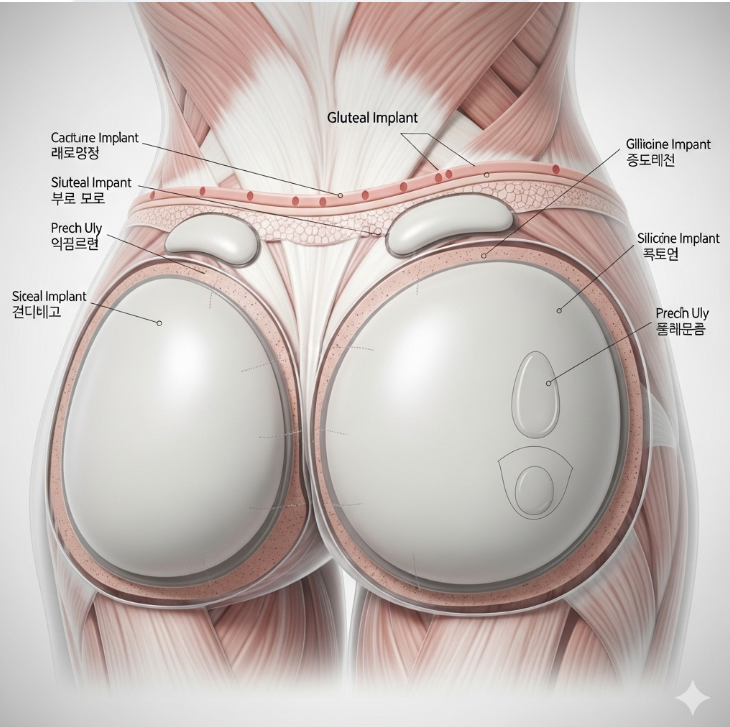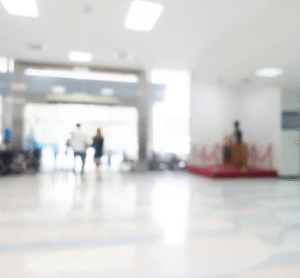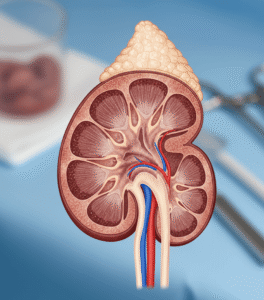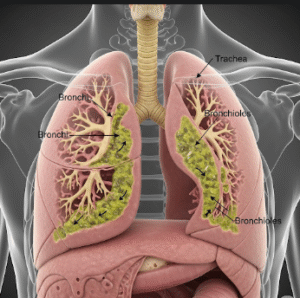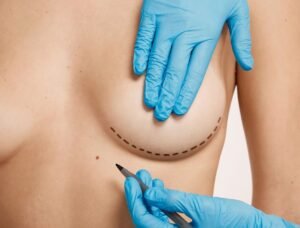What It Is
Gluteal augmentation with implants, also known as buttock implant surgery, is a cosmetic procedure that enhances the shape, size, and projection of the buttocks using specially designed silicone implants. Unlike fat transfer (Brazilian Butt Lift), which relies on a patient’s own fat, implants provide a reliable way to achieve fuller, rounder buttocks for patients who lack sufficient fat for grafting or want a more dramatic and permanent result.
The implants are typically made of solid but soft silicone, designed to feel natural while maintaining long-term shape and stability.
Why It’s Done
Patients choose gluteal augmentation implants because:
- They want more volume and projection in the buttocks than fat grafting can provide.
- They are too slim to undergo Brazilian Butt Lift (BBL) due to insufficient donor fat.
- They desire a more curvy, balanced silhouette with enhanced lower body proportions.
- They want a long-lasting solution to naturally flat or underdeveloped buttocks.
Good candidates include:
- Men and women with naturally flat or small buttocks.
- Patients at a stable weight who lack enough fat for BBL.
- Individuals in good health, non-smokers, and with realistic expectations.
Alternatives
- Brazilian Butt Lift (BBL): Uses fat transfer for a natural enhancement, but depends on available donor fat and carries risks of fat resorption.
- Buttock lift: Tightens sagging buttocks but does not add significant volume.
- Non-surgical buttock augmentation: Hyaluronic acid or filler injections provide temporary results but require maintenance.
Preparation
Before gluteal implant surgery in Korea, patients will:
- Have a consultation to determine implant size, shape (round or oval), and placement.
- Undergo medical testing including bloodwork.
- Stop smoking and alcohol for at least 4 weeks before surgery.
- Discontinue blood thinners and certain supplements.
- Arrange for 2–3 weeks of downtime and avoid prolonged sitting after surgery.
How It’s Done
- Anesthesia: Usually performed under general anesthesia.
- Incision: A small incision is made in the natural crease between the buttocks or in the upper buttock fold.
- Implant placement: The implant is inserted either within the gluteal muscle (intramuscular) or beneath it (submuscular), depending on patient anatomy and desired results. Intramuscular placement is commonly used for a more natural look.
- Closure: The incision is closed with sutures, and dressings are applied.
- Duration: 2–3 hours, often requiring one overnight hospital stay.
Recovery
- First 2 weeks: Swelling, bruising, and discomfort are common. Patients are advised to avoid sitting directly on the buttocks.
- Sleeping position: Patients should sleep on the stomach or sides for the first few weeks.
- Compression garment: Worn for 6–8 weeks to support healing and reduce swelling.
- Return to work: Most patients resume light activities after 2–3 weeks.
- Exercise: Gentle walking is encouraged, but strenuous activity and glute exercises should be avoided for 6–8 weeks.
- Final results: Visible immediately, with the final shape and softness settling in after 3–6 months.
Possible Complications
- Temporary swelling, bruising, or discomfort.
- Implant shifting or asymmetry.
- Fluid accumulation (seroma) or infection.
- Rare risks: capsular contracture (scar tissue tightening around the implant) or implant rupture.
Treatment Options in Korea
Diagnosis
Korean surgeons evaluate buttock shape, fat availability, and body proportions during consultation. 3D imaging may be used to select the best implant size and shape.
Medical Treatments
Non-surgical buttock enhancement with fillers may be considered for patients unwilling to undergo surgery, but results are temporary.
Surgical or Advanced Therapies
- Gluteal augmentation with implants for permanent, reliable buttock volume.
- Combination with liposuction or fat grafting (hybrid augmentation) for enhanced shaping and natural blending.
- Advanced Korean techniques often use intramuscular implant placement to reduce risks and create natural results.
Rehabilitation and Support
- Regular follow-ups to monitor implant position and healing.
- Access to scar management and skin care therapies.
- Specialized aftercare instructions for sitting, sleeping, and mobility.
- Multilingual support staff for international patients throughout recovery.

